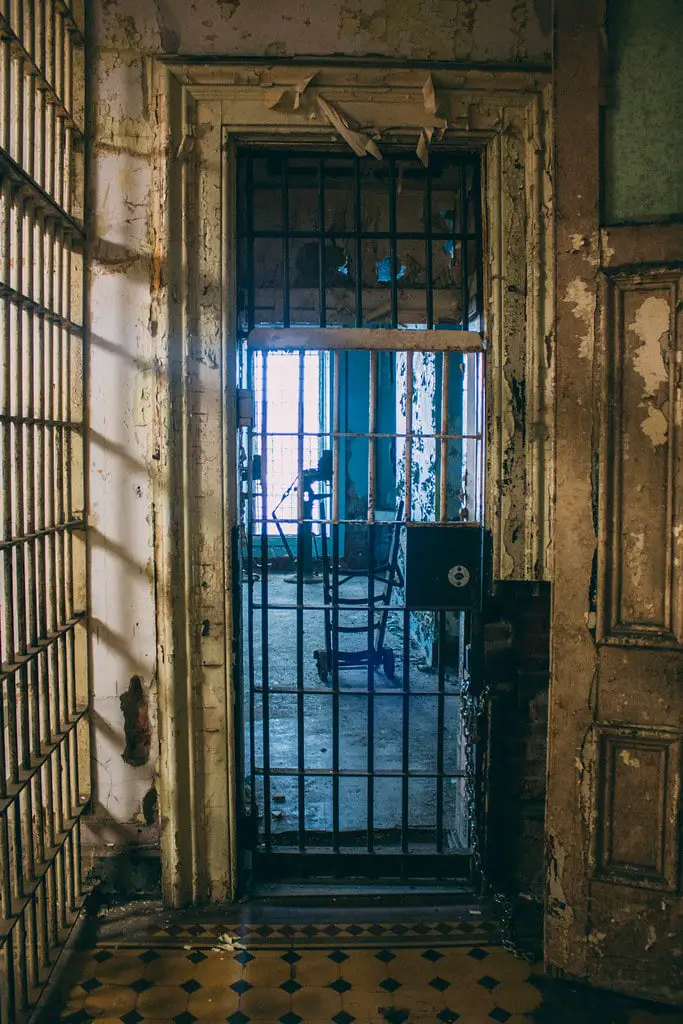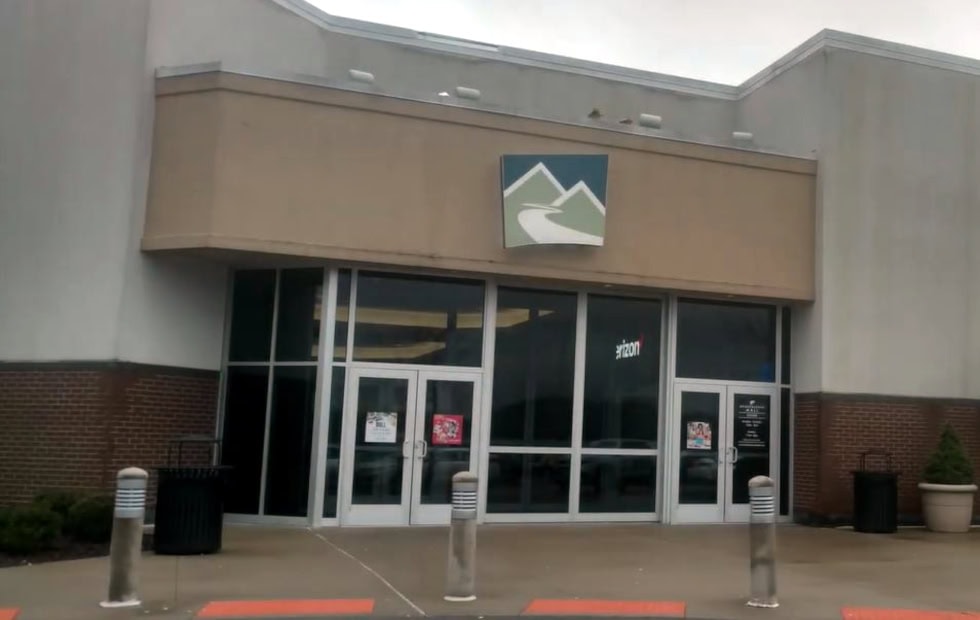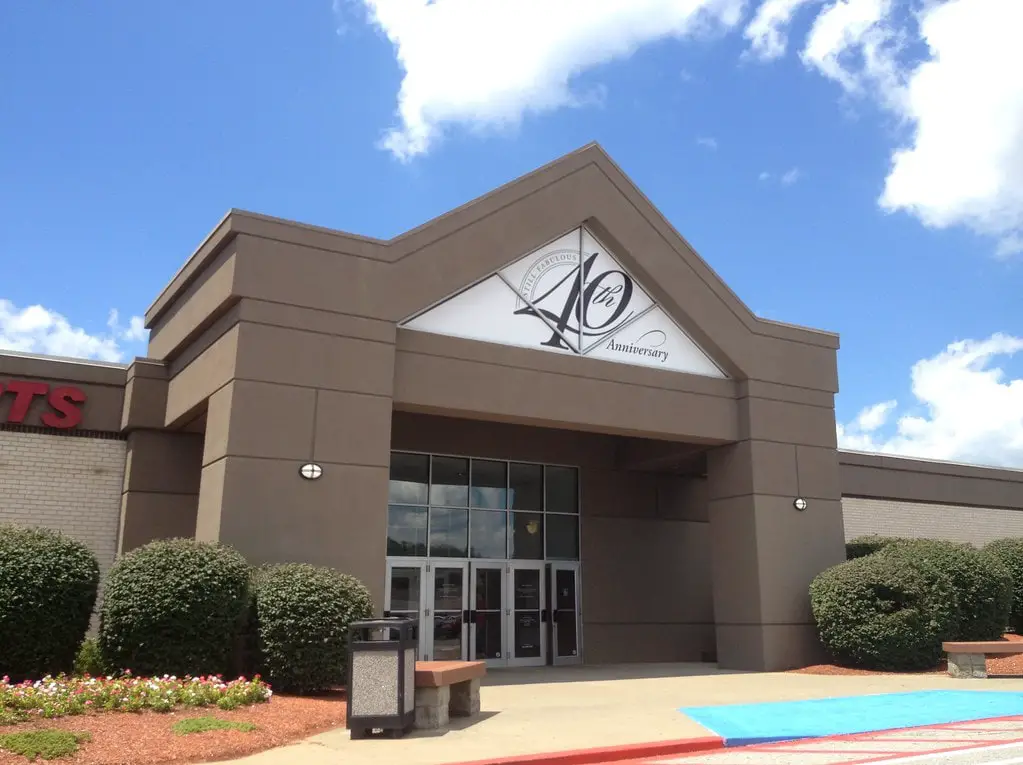The West Virginia Penitentiary in Moundsville isn't just a landmark - it's a 682-foot-long stone fortress that once held hundreds behind walls nearly two feet thick.
From Jefferson Avenue, the Gothic Revival turrets still tower over the sidewalk, casting shadows that stretch across the city block.
Construction started in 1866, back when Moundsville sat just beyond the edges of the state capital. By 1876, it was ready for inmates, some of whom had helped build it.
For anyone looking for things to do in Moundsville, West Virginia, the old penitentiary is hard to miss.
But understanding why it was built in the first place means going back to a time when the state itself was brand new, and missing more than a few essential services.
Breaking Ground - The 1866 Buildout
After West Virginia separated from Virginia in 1863, it found itself short on public institutions.
There was no state prison. From 1863 to 1866, prisoners were housed in out-of-state facilities or kept in local jails.
Neither method worked well. In 1865, nine inmates escaped - enough to push the legislature into action.
On February 7, 1866, lawmakers approved the purchase of ten acres outside Moundsville city limits for $3,000.
The site was just twelve miles south of Wheeling, which served as the state capital at the time.
By that summer, a temporary wooden facility opened while officials settled on a design.
They went with a version of the Joliet, Illinois, penitentiary - scaled down but still imposing.
The plan called for a stone perimeter, turrets, battlements, and narrow windows.
Inmate labor was used to cut and place sandstone from nearby quarries.
The first major structure was the North Wagon Gate, and the first phase of construction took a full decade to finish.
By 1876, the site had two long cell blocks - north and south halls - each measuring 300 feet by 52 feet.
South Hall held 224 cells. The north side had the kitchen, hospital, dining area, and chapel.
Between them stood a four-story central tower with administrative offices, female inmate space, and the warden's residence.
The final cost came in at $363,000.
The prison officially opened that year with 251 inmates, some of whom had helped build the cells that would hold them.
Labor, Livelihood, and the Business of Incarceration
By the early 1900s, West Virginia Penitentiary wasn't just a prison - it operated like a closed economy.
Inside the walls, inmates worked daily jobs that supported the facility and helped cut outside costs.
There was a carpentry shop, a bakery, a stone yard, and a blacksmith.
Inmates also staffed a tailor's room, wagon shop, hospital, and paint shop.
In 1921, the prison opened a coal mine about a mile from the main complex.
Men worked the mine under supervision, not by prison staff, but by a hired foreman.
The setup saved the state an estimated $14,000 a year in heating and power expenses.
On paper, the system worked. A warden's report from the early 20th century described steady improvements in supplies and discipline.
He wrote that clothing, food, and material purchases were better in both quality and quantity.
By 1900, the prison had a school and library. Inmates attended class regularly. Education wasn't optional - it was part of daily life.
Still, space was always an issue. The original 5-by-7-foot cells were built for one man.
But by the late 1920s, crowding forced the prison to house three inmates in each cell.
Two used bunks and the third got a mattress on the floor.
In 1929, state officials approved an expansion to double the facility's size.
Construction didn't wrap up until 1959, and it was delayed for years due to World War II steel shortages.
As with the original build, prison labor filled most of the workforce.
Over the years, the penitentiary kept producing its products - from furniture to bricks.
That kind of internal output helped the state reduce operating costs, even during budget years when money was tight.
The mine, the workshops, the farm - all of it fed into the idea that the prison could carry its weight.
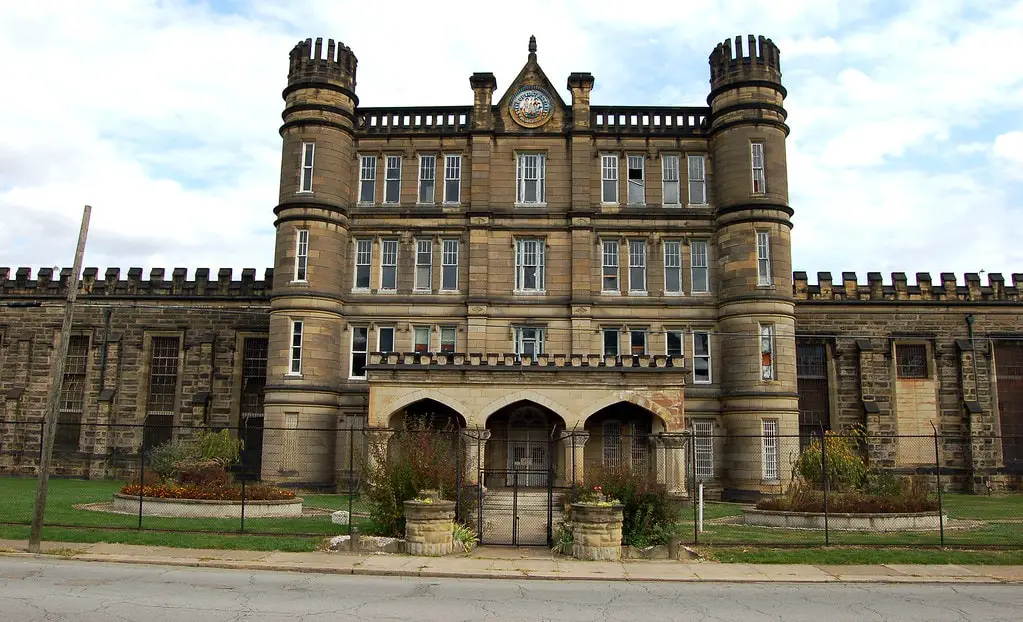
Trouble Inside - Incidents, Escapes, and Decline
Security at the penitentiary didn't hold up, and neither did its walls.
The first major breach came on November 7, 1979. Fifteen inmates got out.
One of them, Ronald Turney Williams, was serving time for the 1975 taking of the life of Beckley police sergeant David Lilly.
During the escape, Williams got hold of a guard's weapon and used it that same day against off-duty state trooper Philip S. Kesner.
The trooper was driving by the prison with his wife.
He saw the escape, tried to intervene, and was hit by a bullet.
Williams ran. He stayed free for 18 months and was later added to the FBI's Ten Most Wanted list.
Williams didn't stop at the state line. He was later tied to a 1980 violent episode in Scottsdale, Arizona.
After a shootout in New York City, federal agents brought him back to West Virginia.
As of October 2024, he remains in custody.
Then came the 1986 riot - January 1, New Year's Day.
Inmates picked the date on purpose. Staffing was low, and many locks no longer worked.
The "Avengers," a group of twenty inmates, stormed the dining hall just after 5:30 p.m.
They took officers and a food service worker hostage.
Three inmates lost their lives in the unrest. Governor Arch A. Moore, Jr. arrived in person to negotiate.
The standoff pushed forward a new set of rules and policies for the prison.
At that point, the population had swelled to over 2,000 men.
Most cells still held three inmates. The riot marked a breaking point, both inside and outside the institution.
By the late 1980s, the state's highest court ruled that the living conditions, especially the cramped cells, violated the constitution.
Execution Chamber Inventory - Hangings, Chairs, and Policy Shifts
Between 1899 and 1959, ninety-four executions were carried out at the West Virginia Penitentiary.
The state used hanging until 1949. The process wasn't private at first - viewings were open to the public until June 19, 1931.
That changed after the execution of Frank Hyer.
Hyer had been sentenced for taking his wife's life. His case wasn't unusual, but what happened at his execution forced policy adjustments.
When the trapdoor opened, the force of the fall was enough to cause decapitation.
After that point, only a controlled group could attend.
Eighty-five men were hanged before the state switched to electrocution.
In 1951, the penitentiary introduced the electric chair.
"Old Sparky," as it came to be known, was built by inmate Paul Glenn.
The first electrocution took place soon after, and by the end of that era, nine men had passed away in the chair.
The last was Elmer Bruner on April 3, 1959. He had been convicted in Ohio County.
Six years later, in 1965, West Virginia ended the use of the ultimate legal penalty.
Since then, no executions have been carried out in the state.
The chair remains on-site today, part of the tour route, and is displayed in its original setting.
The state buried some unclaimed bodies in a small cemetery behind the prison.
One of them was Bud Peterson, the last person to be hanged in the yard.
His family refused to take the body. As for the facility's execution history, it hasn't been erased.
It's cataloged, itemized, and shown plainly - names, dates, and causes.
The equipment never left. Neither did the records.
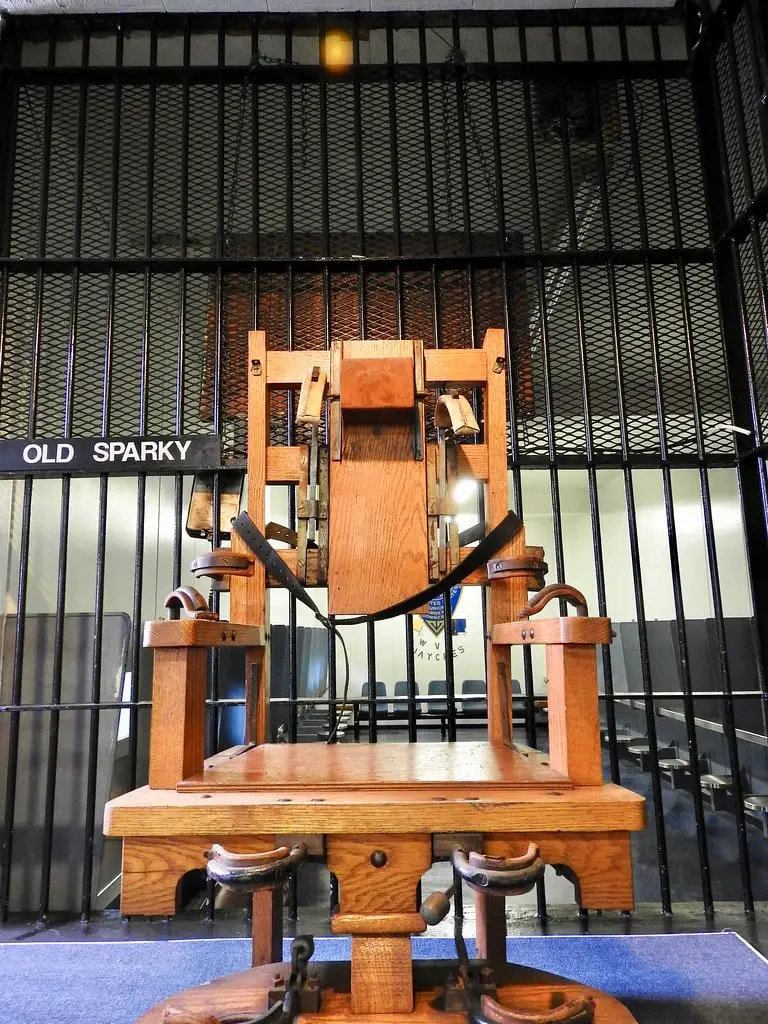
Repurposed Inventory - From Lock-Up to Lineups
After the West Virginia Supreme Court ruling in 1986, things moved slowly.
The prison operated for nearly a decade. By 1995, most inmates had been transferred to the Mount Olive Correctional Complex in Fayette County.
A smaller regional jail was built one mile away. Although the old building no longer held prisoners, it didn't sit empty.
The Moundsville Economic Development Council signed a 25-year lease on the site.
Since then, the grounds have hosted tactical training sessions, law enforcement drills, and public tours.
By 2009, the West Virginia High Technology Consortium Foundation had developed a full 3D model of the structure.
The software helped agencies plan simulated riot responses.
Mock Prison Riot events still draw teams every spring.
The site now offers multiple programs: daytime tours, overnight stays, escape rooms, and seasonal haunted attractions.
One recurring draw is the "Dungeon of Horrors," held every fall.
The penitentiary has also served as a filming location.
Scenes from Out of the Furnace (2013) were filmed here.
Hulu's Castle Rock used the complex as a stand-in for Shawshank State Prison.
In 2017, Mindhunter captured exterior footage for its debut season.
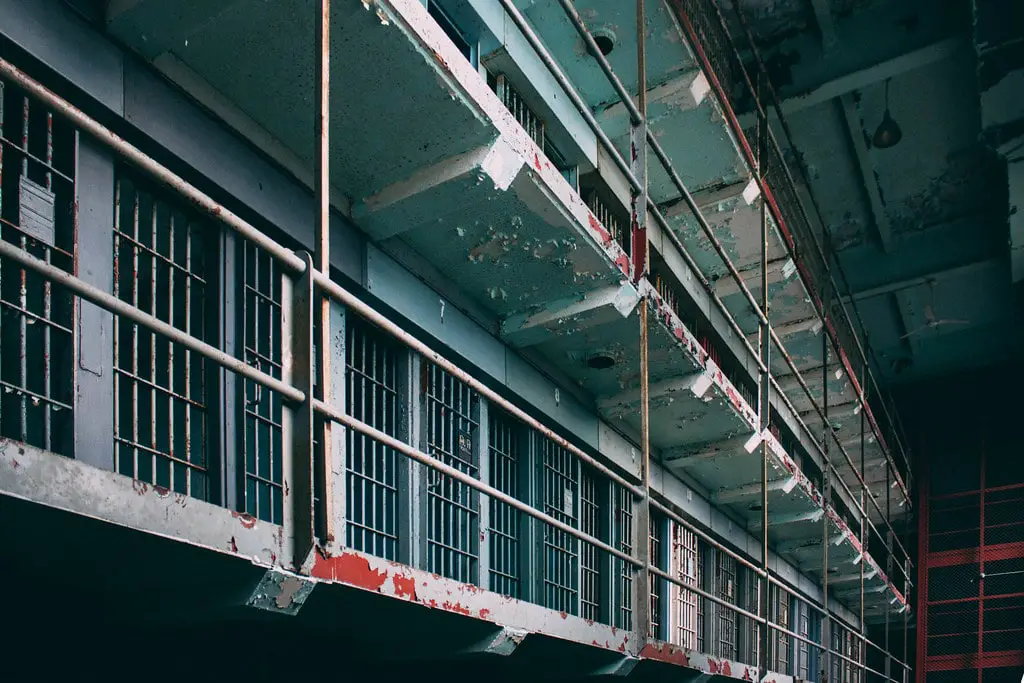
Booking the Yard - 2025 Events and Seasonal Lineups
Three major events have been confirmed at the West Virginia Penitentiary for spring 2025.
First up: the "Locked Up" Tattoo Convention, which returned for its third year from March 21 to 23.
More than 150 artists filled the space.
The setup included live tattooing, vendor tables, and art displays stretching across multiple areas of the complex.
Next on the calendar is the Mock Prison Riot, scheduled for May 4 through 7.
It's one of the country's longest-running tactical training events.
Law enforcement, military, and corrections teams from several states will rotate through scenarios and exercises staged inside the facility.
Registration this year costs $50 per person. Events range from skills contests to live demonstrations.
Technology vendors also use the site to test gear in active environments.
Less than two weeks later, on May 17 and 18, Break the Chains Wrestling will host the "Escape the Pen" tournament.
It's set to draw over 800 amateur wrestlers from the U.S. and Canada.
Winners receive handcuff-shaped awards, and attendees can get discounted admission to the prison's regular tours.
Outside those dates, the penitentiary keeps its public schedule running.
Visitors can join daytime guided tours or sign up for overnight ghost hunts.
Private paranormal investigations are available by reservation.
Escape room bookings continue year-round.
In October, the "Dungeon of Horrors" takes over the grounds with weekend events tied to the Halloween season.
Most of these programs fill quickly. Tickets and times are posted on the official tour calendar, which updates as events are added.
The building that once held inmates by force now opens its doors to paying guests, with very different reasons for walking in.
